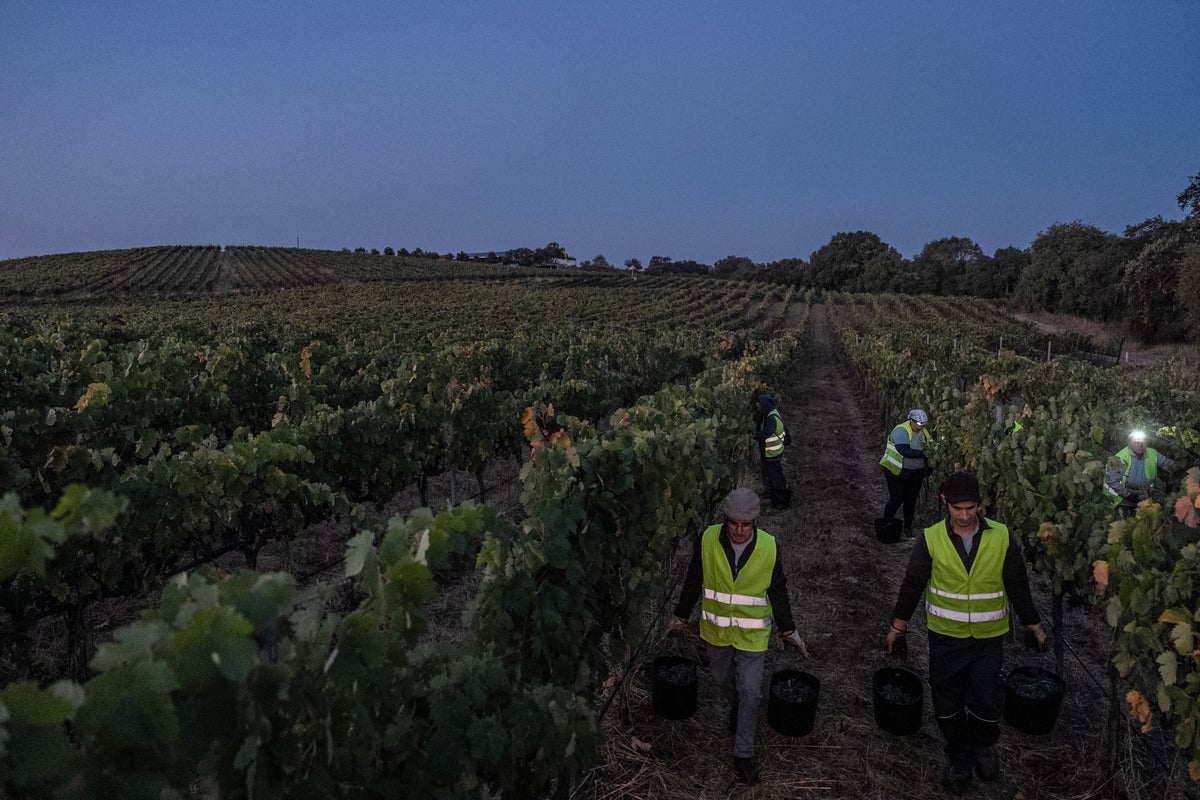
Under a moonlit sky, grape pickers in Portugal’s Alentejo region are increasingly working through the night, a practice made more common by the country’s longer, hotter summers.
In this area, often dubbed the “Tuscany of Portugal” for its rolling vineyards, workers operate by headlamps, their laughter blending with rustling leaves.
This time-honoured viticultural method preserves grape freshness, shielding them from intense daytime heat, sunlight, and oxidation.
As Portuguese summers become longer, hotter, and more unpredictable – a direct consequence of climate change – this nocturnal harvesting has become a more common sight.
Bárbara Monteiro, co-owner of Herdade Da Fonte Santa vineyard, initially struggled to convince her team to adopt the midnight to 8am schedule, which began in 2019.
She notes: “Today, we can say they actually prefer this schedule, as they can often work almost another day, enjoy the day, and avoid the extreme heat we often experience here.”
The wider wine harvest across Spain, Italy, and Portugal typically occurs between late August and October, varying by region and grape type.
Some vineyards have been harvesting at night for years. In parts of Italy, others have for more than a decade. The El Coto de Rioja vineyard in Spain’s famed La Rioja region opts for early morning harvests, beginning at 5 or 6 am, according to César Fernández, the vineyard’s technical director and winemaker.
In Portugal’s Alentejo region, daytime temperatures particularly in August can reach 40 Celsius (104 Fahrenheit). At night, they can drop by as much as 20 C (36 F) or more.
Grapes are naturally sensitive to temperature shifts. Warmer weather can make them reach sugar maturity before developing a full flavor and ripeness, leading to higher alcohol levels but less complex wines. Intense heat also speeds up acid loss and can trigger early fermentation as wild yeasts and bacteria become more active.
By harvesting at night, vintners can lock in more vibrant flavors that improve the quality of the wine produced.
“Climate change has greatly influenced our harvest and the process and we’ve adapted over the years,” Monteiro said.
Harvesters, too, don’t mind the gentler temperatures.
Foreman Vitor Lucas, 55, says he prefers the night harvest, even though there are some warm nights at the start of August.
Around 3am, workers take a short break to rest and enjoy a meal known as a “bucha,” consisting of cheese, olives, chorizo, bread and even a bit of wine. Then they return to the fields for another four hours before heading home.
The wine harvest here usually ends in September or October. That late in the season, temperatures have cooled significantly when foreman Lucas and nearly 10 others work the fields.
“It’s a harvest we enjoy doing,” he said.
